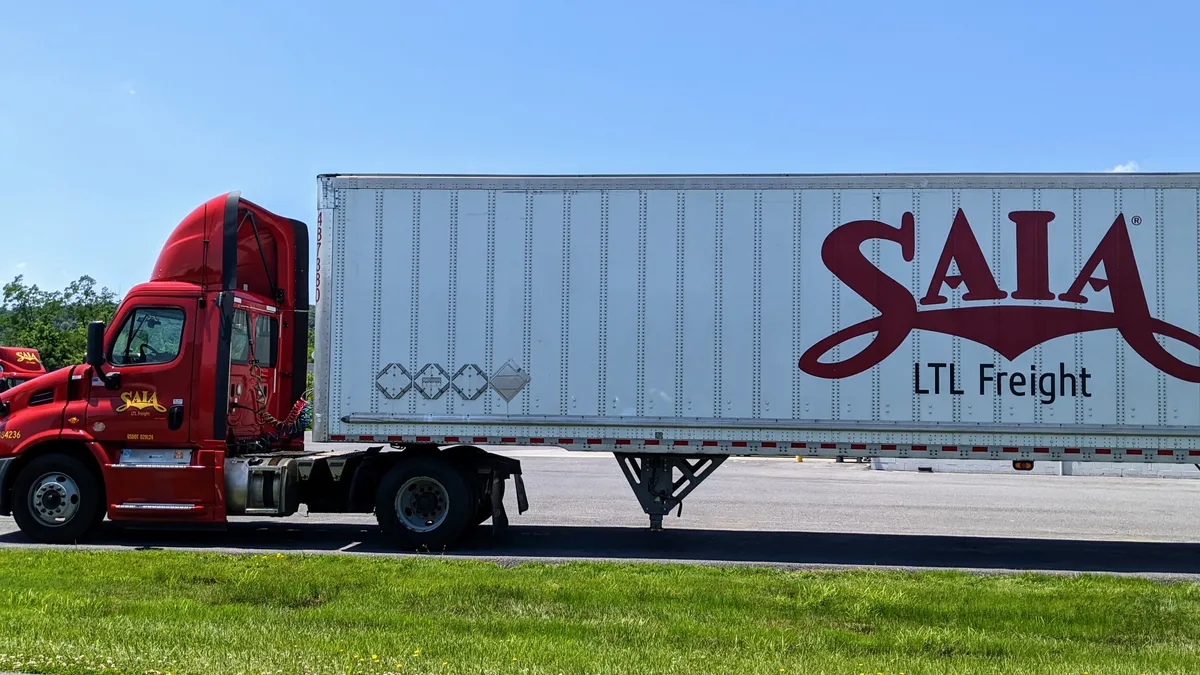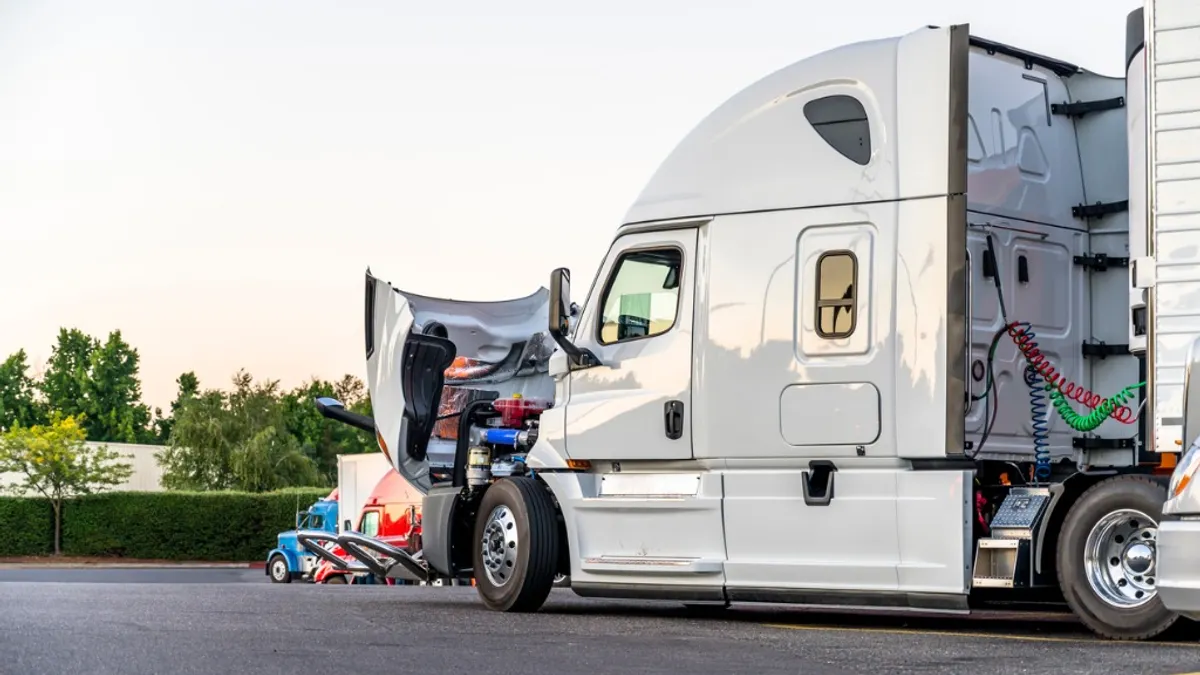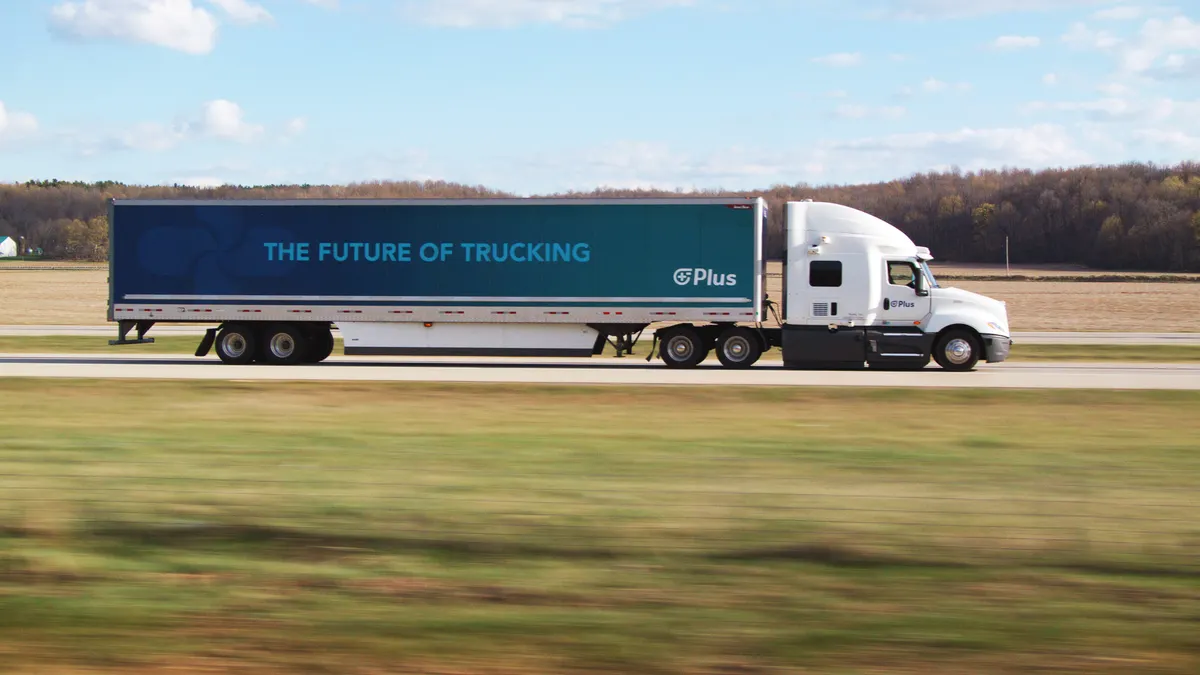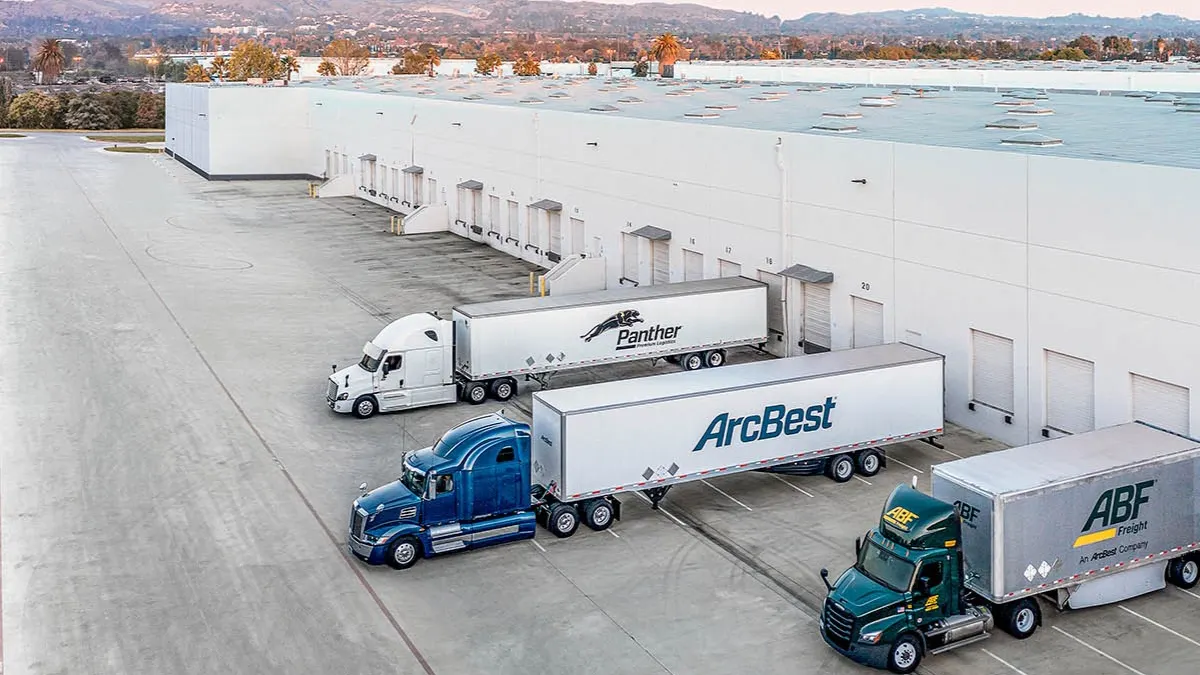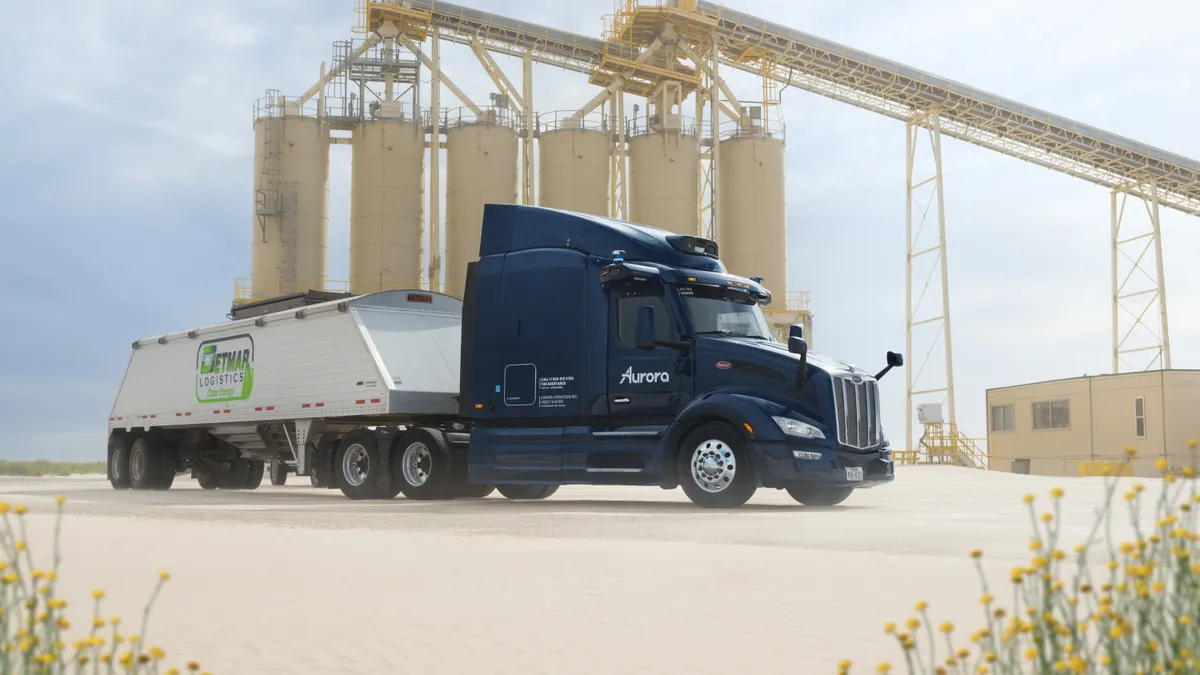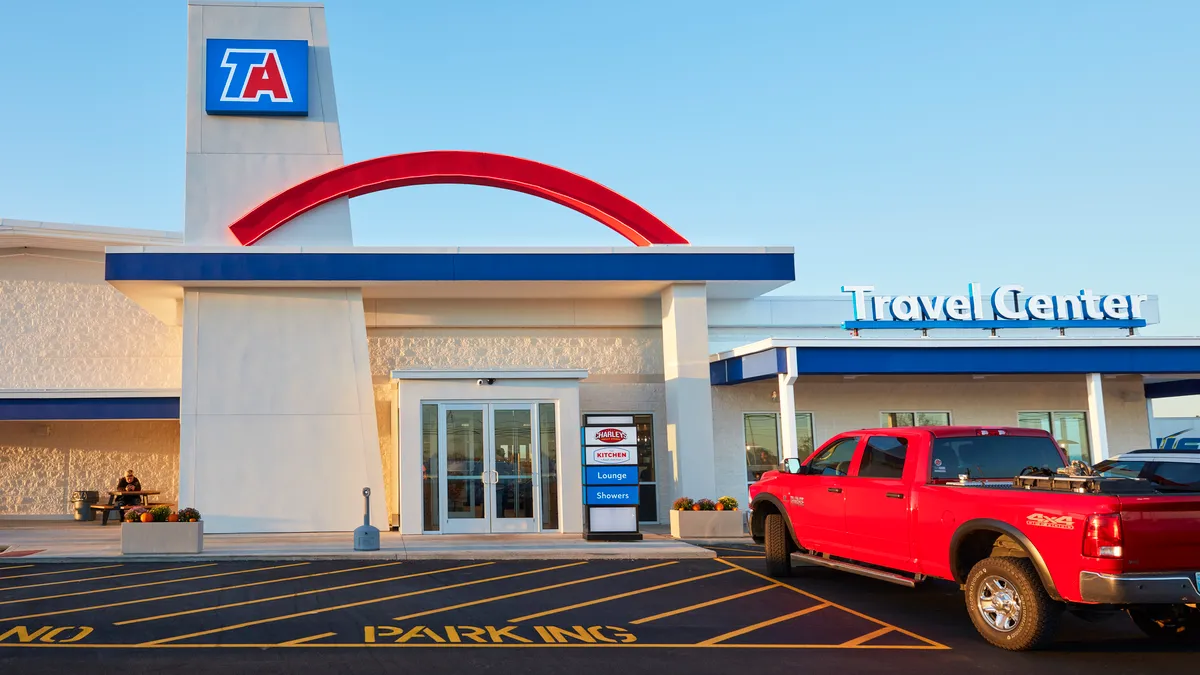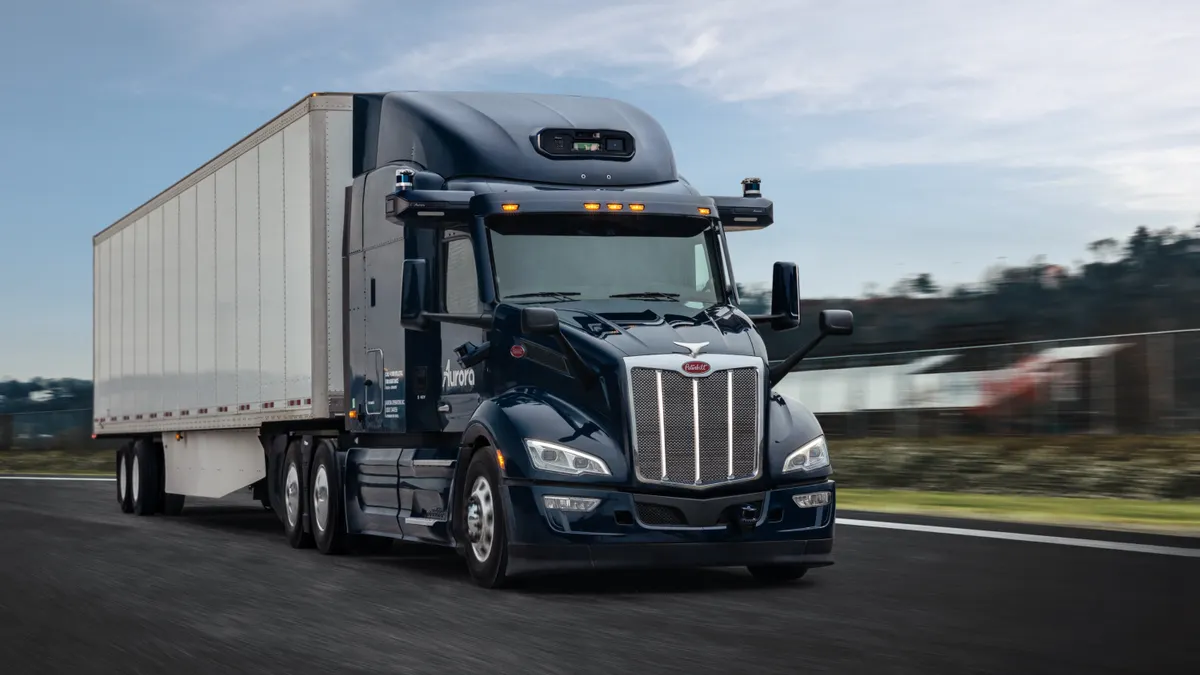In recent years, Texas has established itself as the hottest state in the nation for autonomous vehicle development, especially when it comes to trucking. Companies including Waymo, Kodiak Robotics, Gatik and Aurora have all flocked to the state to do pilot runs of their technology.
But as growing number of other states welcome AV-friendly legislation, what is it that sets Texas apart?
“There are some pretty compelling reasons,” Allan Rutter, division head of freight and investment analysis at the Texas A&M Transportation Institute said. “It starts with the fact that Texas is a pre-experiment, barrier-free environment.”
Texas keeps strict restrictions out of the innovation development equation more so than many other states, making it friendlier to startup AV trucking companies looking to establish a foothold, Rutter said. Texas also encourages public-private partnerships, one of the factors that brought Embark Trucks there.
“Texas boasts a thriving AV sector, due in part to the lone star state’s extensive public-private partnerships,” said Sam Abidi, Embark’s chief commercial officer. “By engaging with developers to support the safe operation of autonomous trucks, the Texas department of transportation and public safety have established Texas as a leader well-positioned to reap the safety and efficiency benefits of the technology.”
Darran Anderson, Texas Department of Transportation director of strategy and innovation, said that the AV trucking boom began when the state legislature passed its first regulation of autonomous vehicle technology in 2017.
“The legislature recognized the development occurring in AV and its potential. It developed the law to answer initial issues regarding issues relevant to their development,” Anderson said.
Anderson noted several factors that create an attractive environment for the AV industry, such as a varied geography and climate; common regulatory framework for businesses to grow at scale; multimodal freight activities; a growing, diverse workforce; and a research and education base.
Research in the state includes partnerships between AV companies and the Texas A&M Transportation Institute. “The CAV is a formal, structured interaction between vehicle manufacturers, Texas agencies and the legislature to coordinate the next best steps to continue to make the state favorable for AV development,” Rutter said.
The institute serves as a trusted third party to demonstrate the value and safety of AVs on Texas roads. “We will partner with the public and private sectors to develop the next steps to make AV trucking more routine and operational,” Rutter added.
This relationship was attractive to Embark, Abidi said.
“Houston is home to leading academics and research institutions dedicated to AV technology, such as those at Texas A & M,” Abidi said. “We are working closely with these partners to test, deploy and validate our technology.”
Texas offers prime testing grounds for AV companies
Another major boon for piloting AV technology in Texas is the state’s location as a transportation hub. The state is home to several major trucking routes, including along the I-45 corridor between Houston and Dallas where AV companies like Waymo are running pilots, as well as from Dallas-Fort Worth to Atlanta, a route that startup Kodiak has been testing with its technology.
“Houston is uniquely positioned for commercially viable, long-haul autonomous freight,” Abidi said. “It is at the center of key 600-plus-mile trucking lanes that are ideal for automation. They cannot be completed in a single day by a human driver due to hours-of-service limitations. Hauls on such lanes can see meaningful improvements in delivery speed using autonomous freight.”
Abidi also noted Texas’ mature AV workforce in Texas, which provides a deep talent pool as the company expands its headcount.
“We see the I-10 corridor as a strategic beachhead for early deployment of AV trucks and hope to expand our operations footprint across the Southern U.S. from Los Angeles to Florida as our technology and the regulatory environment develop. Texas offers an ideal proving ground for this rollout strategy.”
The state is continuing to identify challenges and opportunities for AV development, Anderson said.
“Continuous, open collaboration is the key,” Anderson said. “Both industry and government have to be understanding of each other’s responsibilities and obligations, so that positive and safe solutions are developed that mutually respect those obligations.”



